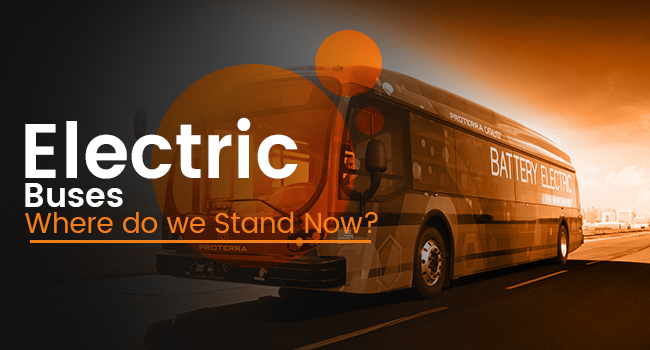The popularity of electric bus is increasing day by day. Why are they popular? Nevertheless, the highlight of an electric bus is the way they reduce environmental pollution, enhancing the safety and security of citizens. Indeed, it is yet another praiseworthy innovation of technology, which augments the road safety.
Let’s check out the efforts of various countries towards introducing electric buses. First and foremost, have a glimpse of the efforts of Poprad city:
Poprad City Becomes the First Slovakian City to Test Electric Buses
Poprad becomes the first Slovakian city to completely test an electric bus. The highlights of the bus include the following:
- Low-floor model and fully propelled by electric power
- The Leonis Electric
- 12 meters long
- Had its premiere on October 2017
- Result of 2 years effort
- Require 4 hrs charging and should operate for 200 km before recharging
- Trial operation will remain for 6-12 months
NTU Singapore and Volvo Signs Agreement for Autonomous Electric Buses
Nanyang Technological University (NTU) of Singapore signed the agreement to co-operate on the research and development for the autonomous electric buses. This initiative is a part of the Land Transport Authority of Singapore’s effort to constitute solutions for viable public transport in the future period.
The highlights of the bus include the following:
- 12m long
- Integrated with autonomous driving technologies
- GPS and LIDAR technology-based system
- Will be launched in the beginning of 2019
- OppCharge interface
- Render 300kW of charging power in 3-6 minutes
Proterra Electric Bus Launches in Alaska Region
Of course, severe cold weather condition and electric buses are a dreadful combination altogether. Surprisingly, frigid places such as Alaska, Anchorage, etc. are becoming the target for Battery Electric Vehicles (BEVs).
Check out the highlights of the bus:
- 40-foot electric bus
- 100% electric
- Operates on the routes such as 10, 25, and 35
- Launches within the next 4 months
- Emits zero tailpipe emissions
- Reduce carbon dioxide emissions by replacing it with diesel vehicles
- Lack combustion engine, which ultimately reduce the rate of noise pollution
India’s Efforts Towards Introducing Electric Buses
The Transport Department of India took the first step towards creating a fleet of low-floor electric buses to enhance the Capital’s public transportation. There will be 2 depots for providing accommodation and charging facilities for 200 electric buses.
Consequently, the 2 locations, which was recognized to provide the charging facilities include East Vinod Nagar and Bawana, since it is facilitated with 11KV sub-stations. However, the first trial version of electric bus ran in the city in March 2016. Furthermore, the bus is having an operating cost of Rs 12 per km, when compared to Rs 18 per km for CNG DTC low-floor bus. As a matter of fact, the Indian transportation officials assured that all the CNG buses will be replaced by electric buses at the earliest.
In conclusion, the electric buses will certainly revolutionize the transportation sector in the future. Several countries as mentioned above have given a genuine effort for introducing the electric buses. This will not only reduce environmental pollution, but also enhance the safety of citizens.
